Pallet Changing Machine: How to Reduce Order Delays with Fast Pallet Swaps?
Are you watching your logistics chain get bogged down by a simple, yet frustrating, bottleneck? Your products are manufactured, packed, and ready to go, but they sit on the wrong type of pallet. This forces your team into a slow, manual process of restacking goods, creating delays that ripple through your entire operation. I've seen this problem firsthand on many factory floors. Every minute spent manually transferring loads is a minute lost, increasing the risk of product damage, worker injury, and, worst of all, unhappy customers waiting for their orders. This inefficiency is a hidden cost that eats away at your profit margins and damages your reputation for timely delivery. But there is a straightforward, powerful solution that transforms this bottleneck into a seamless, high-speed checkpoint.
A pallet changing machine directly reduces order delays by automating the entire process of swapping pallets. Instead of slow, labor-intensive manual restacking, the machine can swap a pallet in under a minute. This allows you to instantly adapt loads for specific customer requirements, hygiene standards, or international shipping regulations, eliminating a critical bottleneck and ensuring your products ship out on time, every time.
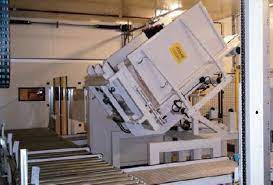
For a practical and forward-thinking leader like Javier Morales, who I know values operational excellence, this isn't just about speed. It's about reliability, safety, and creating a more resilient supply chain. The challenges of a modern steel mill—from fluctuating market demands to the need for strict cost control—require solutions that deliver tangible results across the board. A pallet changing machine is one of those foundational investments. It’s not just a piece of equipment; it's a strategic tool. Let's break down how this technology works, the return it provides, and why it's a crucial component for any modern, efficient industrial operation.
What is a Pallet Changing Machine and How Does It Directly Impact Your Production Line?
Have you ever stood on your loading dock and watched a team of workers struggle to manually transfer a heavy load from a wooden pallet to a plastic one? The process is slow, awkward, and carries a significant risk of something going wrong. I remember visiting a client's facility where this exact scenario was a daily occurrence. It created a constant traffic jam of forklifts and personnel, delaying every single outbound shipment. This single, manual step was undermining all the efficiency gains they had made elsewhere in their plant. It's a common problem, but one that has a very effective mechanical solution.
A pallet changing machine is a piece of equipment designed to safely and quickly swap the pallet from underneath a full load of goods without disturbing the products themselves. It typically works by clamping the load securely from the sides, then either tilting the entire load to slide the old pallet out and a new one in, or by using a pusher plate to gently move the product stack from one pallet to another. This single machine turns a 15-minute, multi-person manual task into a sub-60-second, single-operator automated process. The direct impact is the immediate removal of a major bottleneck between your production line and your shipping department, creating a smoother, faster, and more predictable workflow.
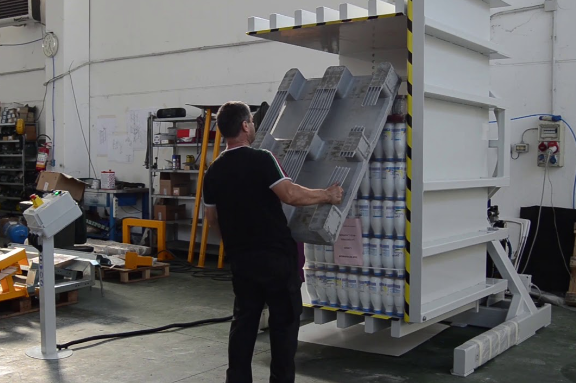
The Core Mechanism: From Manual Labor to Mechanical Precision
The genius of a pallet changer lies in its simple yet robust design. In my engineering experience, the best solutions are often the ones that solve a complex problem with straightforward mechanics. Let's consider the two primary types of mechanisms.
-
The Inverter/Tipper: This style of machine clamps the load, often from the top and bottom, and then rotates it 90 or 180 degrees. Once inverted, the original pallet is now on top and can be easily lifted off. The new pallet is placed on the load, and the machine rotates it back to its upright position. This method is exceptionally secure, making it ideal for stable, uniform loads like boxes, bags, or even heavy steel coils. It contains the product completely during the transfer, virtually eliminating the risk of shifting or damage.
-
The Pusher: This machine works on a different principle. It holds the original pallet in place while a gentle, wide pusher plate slides the entire product stack horizontally onto a new pallet waiting right beside it. This is often faster and can be integrated into conveyor lines more easily. It's an excellent choice for operations that need high throughput and are dealing with loads that are stable enough to be pushed.
For a steel mill owner like Javier, whose products are heavy and valuable, the security offered by an inverter is often the most compelling factor.
The Impact on Your Entire Workflow
Introducing a pallet changer does more than just speed up one task. It has a positive cascading effect on your entire logistics operation.
- Reduced Congestion: The loading dock becomes clear. Forklifts are not waiting for manual transfers; they simply drop a load at the machine and pick up another.
- Standardized Process: The transfer process becomes predictable and repeatable. The time it takes is always the same, which is a massive benefit for planning and scheduling. This directly supports the goal of increasing equipment uptime to 95% by making downstream processes more reliable.
- Increased Flexibility: Need to switch from in-house wooden pallets to export-certified heat-treated pallets? Or from standard pallets to a customer's specific plastic hygiene pallets? This is no longer a major operational headache. It's a simple, quick machine cycle. This agility is crucial when dealing with fluctuating market demands.
Safety, a Non-Negotiable Priority
Let's be direct: manually handling heavy, stacked loads is dangerous. I started my career on the factory floor, and I've seen the back strains and foot injuries that come from this kind of work. A pallet changer removes the human from the most hazardous part of the process.
| Feature | Manual Pallet Swapping | Automated Pallet Changing |
|---|---|---|
| Injury Risk | High (strains, crushing) | Very Low (operator is separate) |
| Product Damage Risk | Moderate to High (dropping, shifting) | Very Low (load is secured) |
| Labor Requirement | 2-3 Workers | 1 Operator (part-time) |
| Process Time | 10-20 minutes | < 1 minute |
| Consistency | Low (depends on team) | High (machine-controlled) |
By automating, you are not just improving efficiency; you are investing in the well-being of your employees and protecting the quality of your products. For a leader focused on overall operational excellence, this is a clear and undeniable win.
Which Type of Pallet Changer is Right for Your Steel Mill's Needs?
You've identified the bottleneck and see the value in an automated solution. But now you face another critical question: which machine is the right one for your specific operation? Choosing the wrong equipment is a costly mistake, both in capital and in lost productivity. I've consulted with many business owners who are wary of this step. They worry about buying a machine that is either too much for their needs or not robust enough to handle their products. The key is to match the machine's capabilities directly to your product, your space, and your workflow.
For a high-capacity steel mill, the choice primarily depends on the form of the steel products being handled and the required throughput. A pallet inverter is often the best solution for heavy, stable loads like stacked steel sheets or coils on a pallet, as it securely clamps the entire load before rotation. A pallet pusher system might be considered if the loads are boxed and you require seamless integration into a high-speed conveyor system. The right choice is the one that aligns perfectly with your operational reality.
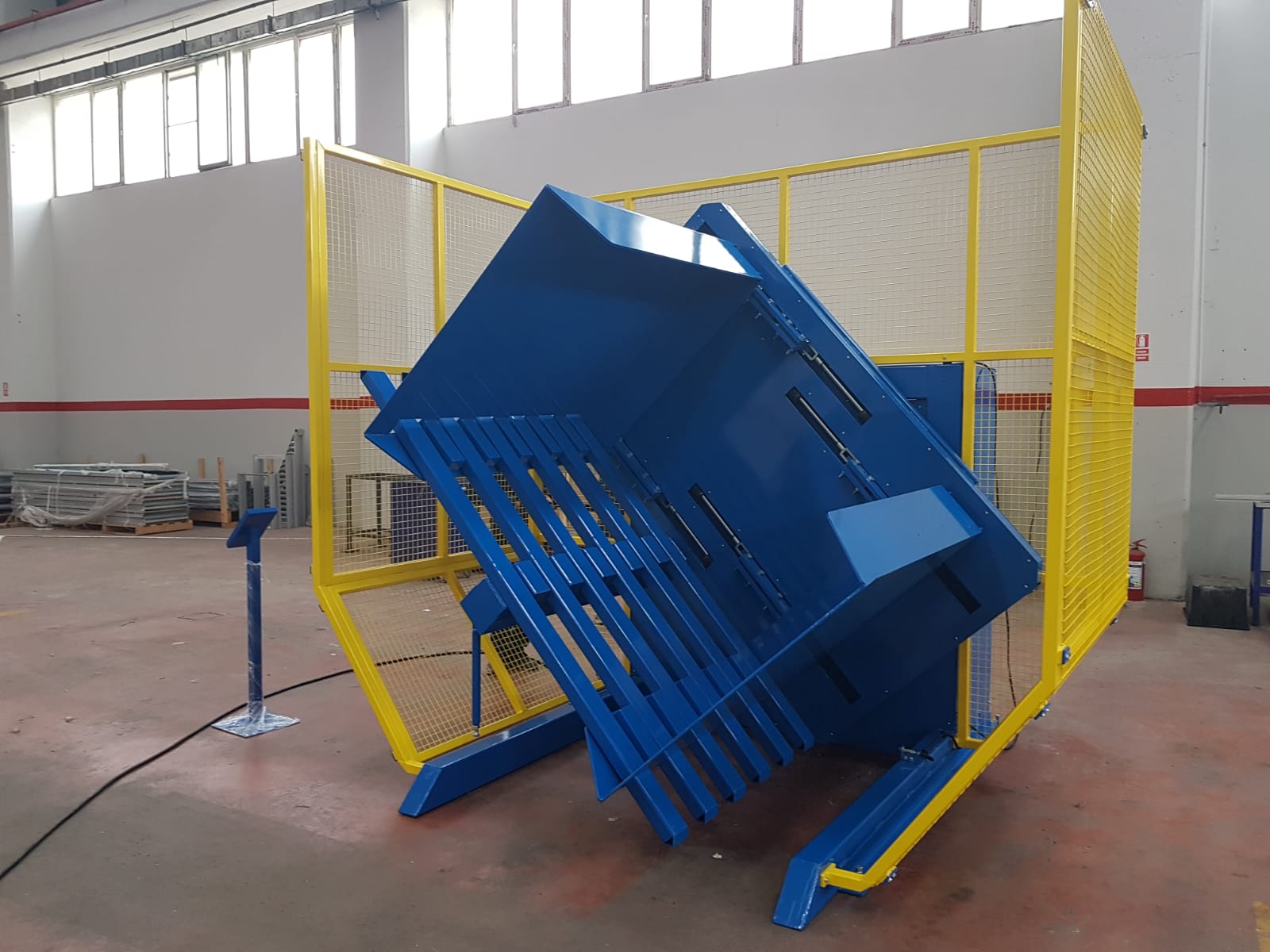
Deep Dive into Machine Selection for Heavy Industry
For an environment like a steel mill, the decision-making process must be rigorous. Javier's focus on strict feasibility analysis for every investment is the correct approach. Here's how I would break down the selection process for him.
The Pallet Inverter: The Workhorse for Heavy Loads
This is the go-to machine for heavy, dense, and stable products. In the context of a steel mill, think of palletized steel wire, small coils, or stacks of processed steel plates.
- Mechanism: It clamps the load from top and bottom, providing maximum security. The 180-degree rotation is smooth and controlled, ensuring that even very heavy loads are handled without stress on the product or packaging.
- Strengths:
- Maximum Safety: The clamping action makes it nearly impossible for the load to shift or fall. This is critical when handling high-value steel products.
- Versatility with Stable Loads: It can handle a wide range of weights and heights, as long as the load is stable.
- Considerations: It typically requires more floor space than a pusher system and is best suited for loads that can be safely inverted.
The Pallet Changer (Pusher Style): The Champion of Speed
This system is built for speed and integration. It shines in environments where products are boxed or shrink-wrapped into stable, solid blocks.
- Mechanism: The load is pushed smoothly from one pallet to the next at the same level.
- Strengths:
- High Throughput: The cycle time is often shorter than an inverter's.
- Easy Integration: Its linear flow makes it simple to add to existing roller conveyor lines, creating a fully automated flow.
- Considerations: It is not suitable for unstable or round loads that might shift or roll during the push. For a steel mill, this might work for boxed finished goods but not for raw coils on a pallet.
Sizing and Customization: A Non-Negotiable Step
A standard machine may not be the perfect fit. A strategic partner, which is what Javier seeks, should be able to offer customization.
| Factor | Key Questions to Ask | Impact on Machine Choice |
|---|---|---|
| Load Characteristics | What is the max weight? What are the dimensions (L x W x H)? Is the load stable or prone to shifting? | Determines clamping pressure, machine size, and whether an inverter or pusher is viable. |
| Pallet Types | What are the dimensions of your source and destination pallets? Are they wood, plastic, metal? Are they block or stringer pallets? | Affects the design of the pallet loading/unloading mechanism and clamping jaws. |
| Throughput Needs | How many pallets do you need to change per hour? Per shift? | Determines the required cycle time and level of automation (e.g., automatic pallet feeding). |
| Available Space | What is the available floor space and ceiling height? | Dictates whether a compact model is needed and influences the overall machine layout. |
For a 2 million-ton-per-year steel plant, the equipment must be heavy-duty and reliable. My recommendation would likely lean towards a robust, customized pallet inverter designed to handle the specific weight and dimensions of their palletized steel products, ensuring it can withstand the demanding environment of a steel mill.
How Can a Pallet Changer Deliver a Fast Return on Investment (ROI)?
Every business leader, especially one as experienced as Javier, understands that machinery is not an expense but an investment. The critical question is always: "When will this investment pay for itself and start generating profit?" In an industry with tight margins and cost pressures, demonstrating a clear and rapid ROI is not just important; it is essential for getting any project approved. I've walked many clients through this calculation, and the results are often more compelling than they initially expect. The financial case for a pallet changer is built on clear, measurable savings in labor, safety, and product protection.
A pallet changing machine delivers a fast return on investment by systematically eliminating major operational costs. The most immediate saving comes from drastically reducing the manual labor hours required for pallet swapping. This is compounded by significant reductions in costs associated with product damage during transfer. Furthermore, by speeding up the logistics process, the machine increases overall throughput, allowing you to ship more product in the same amount of time. When you add the financial benefits of improved workplace safety, such as lower insurance premiums and fewer injury claims, the ROI becomes undeniably strong.
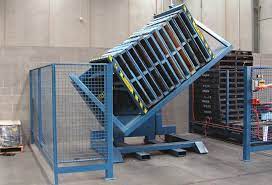
Breaking Down the Financials: A Practical ROI Analysis
Let's move from theory to a practical, numbers-based analysis that a CEO like Javier would appreciate. The goal is to see how this investment directly contributes to his target of lowering overall operational costs by 8%.
Direct Labor Savings: The Most Obvious Win
This is the easiest metric to calculate.
- Scenario: Assume a manual team of 2 workers takes 15 minutes (.25 hours) to change one pallet. They change 30 pallets per day.
- Manual Cost: 2 workers 0.25 hours/pallet 30 pallets/day = 15 labor-hours per day.
- Automated Scenario: A pallet changer, operated by one worker, takes 1 minute (.017 hours) per pallet. The operator's total time is for loading and unloading.
- Automated Cost: 1 operator 0.017 hours/pallet 30 pallets/day = 0.51 labor-hours per day.
- Daily Savings: 14.49 labor-hours.
Assuming a loaded labor rate of $25/hour, that's a saving of $362 per day, or over $90,000 per year on a 250-day work calendar. This single factor can often justify the entire investment in 12-18 months.
The Hidden Costs of Product Damage
In a steel mill, products are valuable. Even a small amount of damage to a finished coil or a stack of high-grade steel sheets can be costly.
- Manual Risk: Manual handling leads to dropped boxes, shifted loads, and dented goods. If just 1% of manually handled pallets experience some form of damage, the cost can be substantial. For a pallet load worth $5,000, a 1% damage rate on 30 pallets a day is a loss of $1,500 per day.
- Automated Protection: A pallet changer secures the load mechanically. The process is smooth and controlled, reducing the damage rate to near zero. This saving goes directly to the bottom line.
Increased Throughput and Operational Efficiency
Order delays are not just an inconvenience; they represent lost revenue potential.
- The Bottleneck Effect: When shipping is slow, the entire production line can be forced to slow down to prevent inventory buildup.
- Unlocking Capacity: By eliminating the shipping bottleneck, you allow your production lines to run at their optimal rate. Increasing your capacity to ship by just 5-10% because of this newfound efficiency can translate into millions of dollars in additional revenue for a high-volume plant. This directly supports the goal of increasing capacity utilization.
| Cost Area | Manual Process (Annual Estimate) | Automated Process (Annual Estimate) | Annual Savings |
|---|---|---|---|
| Direct Labor | $90,000 (15 hours/day @ $25/hr) | $3,187 (0.51 hours/day @ $25/hr) | $86,813 |
| Product Damage | $375,000 (1% of $150k daily value) | $18,750 (0.05% damage rate) | $356,250 |
| Workplace Safety | Varies (insurance, claims) | Significantly Lower | Difficult to quantify, but real |
| Total Tangible Savings | $443,063+ |
This simplified table shows that the financial argument is incredibly strong. The investment stops being a "cost" and becomes a powerful driver of profitability.
How Does a Pallet Changer Integrate with Modern Automation and Digital Systems?
In today's industry, and certainly in the vision of a forward-thinking leader like Javier, a machine cannot be an island. To achieve true operational excellence, every piece of equipment must be part of a larger, interconnected system. You are working to deploy MES, IoT sensors, and data analytics to get a full, transparent view of your production. So, a critical question is: how does a seemingly simple machine like a pallet changer fit into this complex digital ecosystem? It's a valid concern. The last thing you want is a "dumb" machine that breaks your data flow.
A modern pallet changing machine is designed for seamless integration. It acts as a smart node in your logistics chain, capable of communicating with your central control systems. Through its PLC (Programmable Logic Controller), it can connect to your Manufacturing Execution System (MES) or Warehouse Management System (WMS). This allows it to receive automated commands, such as which pallet type to use for a specific order, and send back data, such as cycle completions and operational status. This two-way communication is the key to incorporating the machine into a fully visualized and automated production environment.
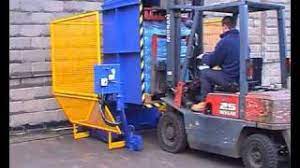
Building a Connected and Intelligent Workflow
Integrating a pallet changer is not just about connecting a wire; it's about making your entire process smarter. This directly supports Javier's goals of digitalization and achieving 95% equipment uptime through predictive maintenance.
Connecting to Your MES and WMS
The brain of your operation is your software layer. Your pallet changer must be able to talk to it.
- Receiving Instructions: An order is processed in your ERP and sent to the MES. As the finished product reaches the end of the line, the MES can send a signal to the pallet changer, telling it what kind of pallet is required for that specific customer order. This eliminates human error in selecting the wrong pallet.
- Sending Data Back: Once the cycle is complete, the machine sends a "task complete" signal back to the MES/WMS. This automatically updates your inventory and order status, providing real-time visibility to your sales and logistics teams. There are no more manual data entries or delays in information.
The Role of Onboard IoT Sensors
Modern machines are packed with sensors that provide a wealth of data. This is where the goal of predictive maintenance comes to life.
- Monitoring Machine Health: Sensors can track motor current, hydraulic pressure, cycle times, and vibration. A gradual increase in motor current, for example, could indicate a bearing is starting to fail.
- Predictive Alerts: Instead of waiting for the machine to break down and halt your shipping line (reactive maintenance), the system can flag the anomaly and send an alert to your maintenance team. They can then schedule a repair during planned downtime. This is fundamental to moving from reactive chaos to proactive control and achieving that 95% uptime target.
Data for Continuous Improvement
The data collected from the pallet changer becomes a valuable asset for process optimization.
| Data Point | Integration System | Actionable Insight |
|---|---|---|
| Cycle Time per Load | MES / Data Analytics Platform | Identify if certain product types are slower to process. Can the process be optimized? |
| Fault Codes | CMMS (Maintenance System) | Track recurring minor faults to identify root causes before they become major failures. |
| Number of Cycles | MES / Predictive Maintenance | Schedule preventative maintenance (e.g., lubrication, inspection) based on actual usage, not just time. |
| Pallet Type Used | WMS / Inventory System | Automatically track consumption of different pallet types for better inventory management. |
By integrating the pallet changer, you are transforming it from a simple mechanical device into an intelligent data source. It becomes a key contributor to your digital transformation, providing the visibility and control needed to run a truly modern, efficient, and data-driven operation. This aligns perfectly with the strategic vision of a leader who is building the steel mill of the future.
My Perspective: Why a Pallet Changer is More Than Just a Machine
When I look at a piece of equipment like a pallet changer, I don't just see steel, motors, and hydraulics. I see a solution to a human problem. I started my career as an engineer on the factory floor. I've felt the physical strain of manual labor, and I've seen the frustration in the eyes of a plant manager whose shipments are delayed because of a simple, repetitive bottleneck.
My journey from an employee to a factory owner taught me a crucial lesson: the most successful businesses are not built on cutting corners. They are built on smart investments that empower their people and streamline their processes. A pallet changer is a perfect example of this philosophy. It's not about replacing workers; it's about removing a dangerous, inefficient, and frustrating task from their daily routine. It frees them up to handle more complex, value-added work.
When I work with a client like Javier, I see a fellow leader who understands this. He's not just buying a machine; he's investing in reliability. He's investing in the safety of his team. He's investing in his company's reputation for quality and on-time delivery. These are the things that build a lasting, successful enterprise. The equipment is the tool, but the goal is always bigger. It's about building a stronger, safer, and more prosperous business. That’s the real TOTAL SOLUTION we aim to provide at SHJLPACK.
Conclusion
A pallet changer is a strategic investment. It boosts efficiency, cuts costs, and eliminates order delays, making your logistics faster, safer, and more reliable. Let's build a better solution together.



